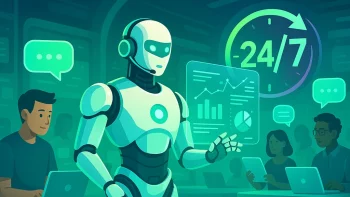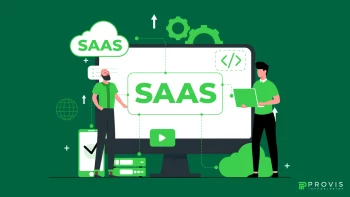The field of artificial intelligence (AI) is evolving faster than ever. As of 2025, 78% of all global companies use AI in at least one business function. [Source]. Lets understand the digital shift from Traditional AI to Agentic AI.
Yet, traditional AI works within pre-defined rule sets; it follows instructions but doesn’t take initiative.
Now imagine an AI that doesn’t just wait for your command but understands your goals, makes decisions, and completes tasks independently.
For instance, an AI sales agent that identifies leads, sends personalized emails, follows up automatically, and updates CRM, all without manual input. This new era of intelligent, self-directed systems is called Agentic AI.
In this blog, we will discuss what Agentic AI is and how it is capable of proactive task management.
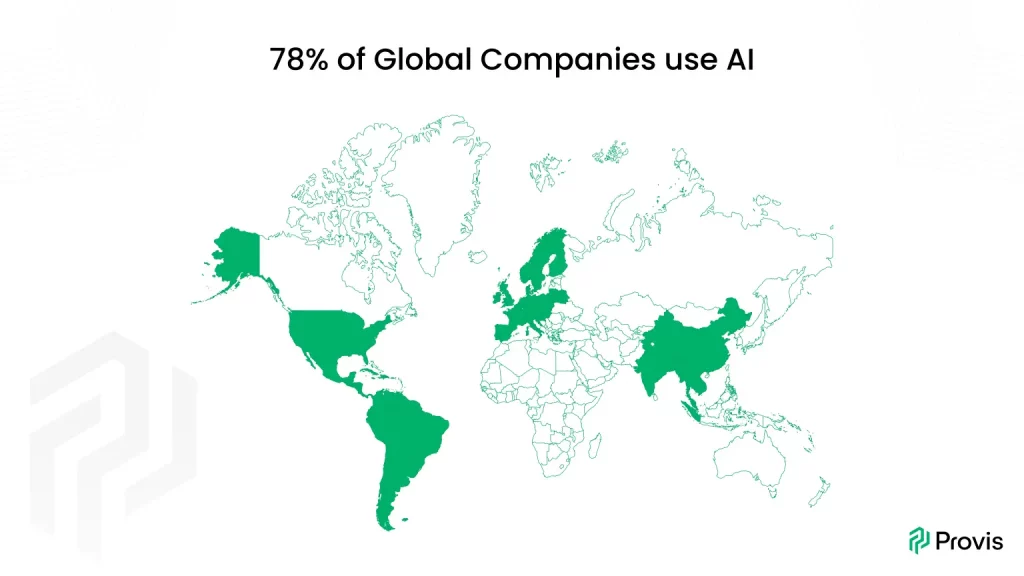
What Is Agentic AI?
Agentic AI is an autonomous, goal-oriented AI system that acts independently and performs complex tasks without constant human oversight. Unlike traditional AI models that follow rule-based execution, agentic AI leverages cognitive architectures, long-term memory, and context-aware learning to operate dynamically across complex environments.
By operating independently, it understands the workflow, analyses the data, and provides results with a better approach.
Example:
- Traditional AI: Voice assistants, such as Apple Siri and Amazon ALEXA, are part of Traditional AI.
- Agentic AI: AutoGPT is an example of this. It handles automated tasks and makes monthly reports without any human intervention.
How Does Agentic AI Work?
Agentic AI is a self-learning AI system combining machine learning, autonomous decision-making, and goal-oriented AI behaviour for complex tasks with minimal human intervention.
Unlike traditional AI, agentic intelligence operates on its own as it understands, reasons, and acts accordingly.
Simply put, it adapts to new environments and executes intelligent tasks that replicate human habits. There are four core layers in Agentic AI:
- Perceive:
This layer allows Agentic AI models to understand and review data through intelligent data processing, natural language understanding and computer vision.
This Layer converts unstructured data into actionable information so context-aware AI systems can recognize patterns and react appropriately to users. - Reason:
This layer uses autonomous reasoning AI, cognitive algorithms, reinforcement-learning agents, and adaptive intelligence to process data and plan actions.
By using human-like reasoning, Agentic AI architecture can make goal-driven and data-driven decisions while learning and improving outcomes.
- Act:
This Layer executes AI workflow automation and decision-making automation.
This means carrying out tasks, optimizing decisions, or generating reports to deliver these outcomes without human supervision.
With self-learning AI agents, their algorithms develop trustworthy and efficient AI outcomes over time.
- Learn: This stage is important for constant improvement of AI and ongoing optimization of AI.
Through adaptive learning loops and dynamic learning agents, the system assesses performance on a continuous basis, captures feedback and refines the processes, thus ensuring the reliability of AI and its continued accuracy over time.
Why Agentic AI Matters?
Agentic AI is revolutionizing the working world by functioning as an autonomous digital co-worker. Here are the top benefits:
Automation of processes: Agentic AI will automate repetitive tasks and commonly performed operations, minimizing the manual effort involved.
Increased productivity: The technology can learn from past interactions and can optimize workflows for improved success and error reduction.
Enhanced decision making: Actionable insights and recommendations are available through product predictive analytics, machine learning and other data-based analysis from the AI product.
Reduced cognitive load and stress: The AI agent will remove/handle tasks that are not important so there is an improved work-life balance.
Opportunities to focus on strategic work: Employees will have the time to focus on innovation, creative problem solving, and higher value add initiatives.
With the capability for intelligent automation and AI-driven workflow optimization, any organization can increase productivity and growth.
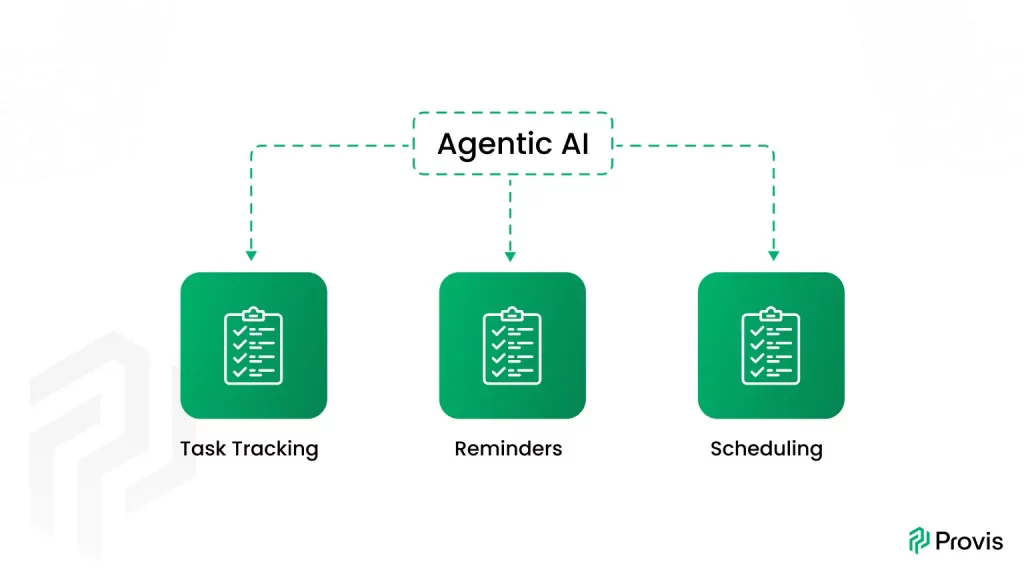
Advantages of Agentic AI
- Routine Workflow Automation:
With the use of Agentic AI, repetitive tasks requiring manual effort are done easily. It monitors, manages, and executes, without human efforts.
From managing customer queries to generating performance insights, it reduces the constant need for human intervention.
This not only saves time but also lets the professionals focus their energy towards creative problem-solving, innovation, and strategic planning, where human Intelligence can add value.
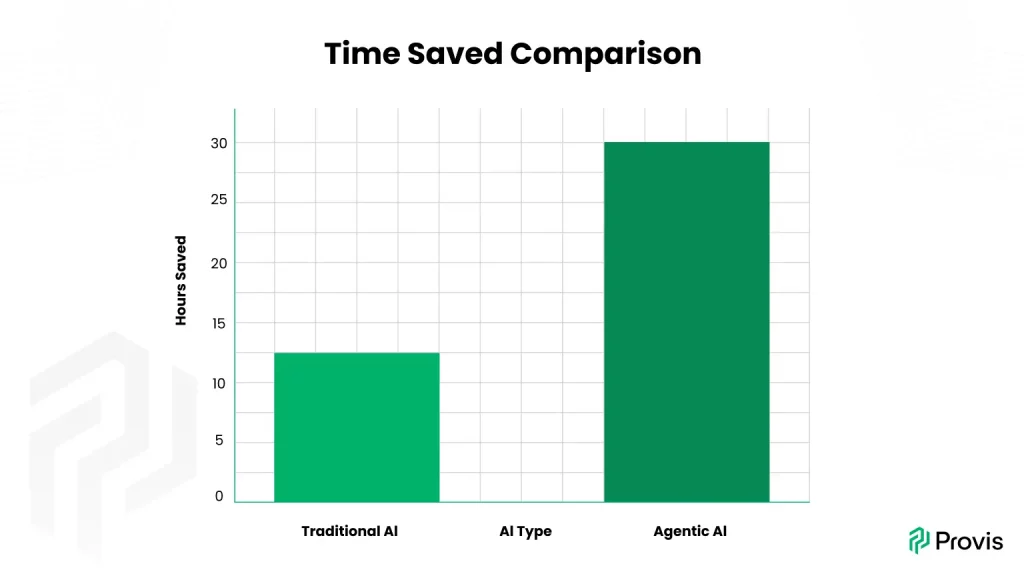
- Data Driven Decisions:
Agentic AI can perform large-scale data analysis using predictive modelling and decision intelligence.
Rather than depending on human judgment or a static dashboard, it analyses the large-scale data in real time with smarter solutions.
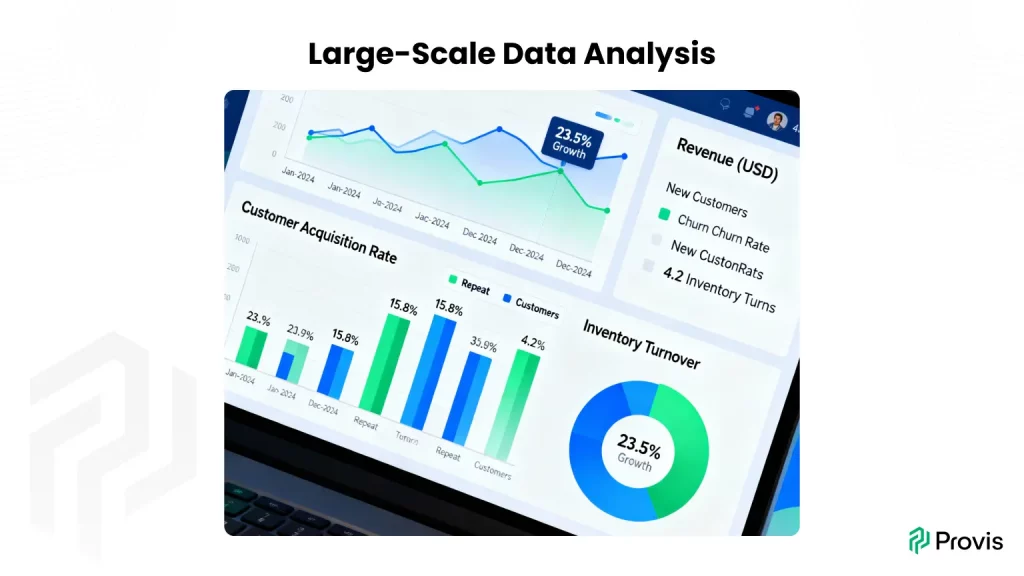
This leads businesses to act faster to adapt to changes in the market, reduce risks, and make smart data-driven decisions that lead to improved business efficiency in long-term outcomes.
- Digital Co-Worker:
Agentic AI isn’t just a backend tool; it can also act as a personal digital assistant that manages your work in a more organised way. Such as:
- Intelligent task management
- Automated Scheduling
- Workflow Optimisation
Handling these tasks on a routine basis with precision allows teams to work more productively while maintaining their focus on their core responsibilities.
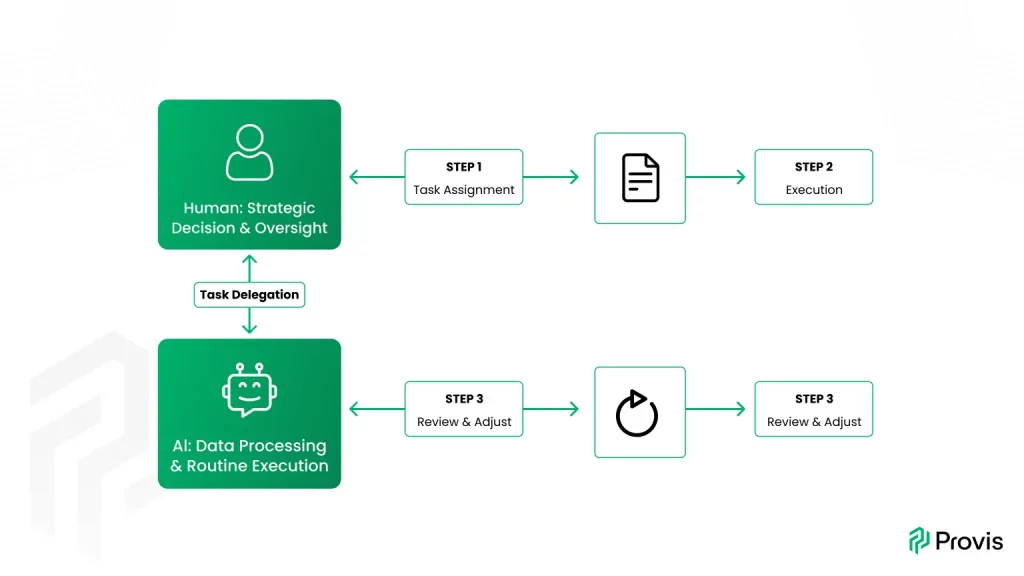
4. Improving Work-Life Balance:
Agentic AI also has a major impact on personal productivity and well-being. Automating repetitive tasks and minimizing manual execution reduces stress associated with tight deadlines and complex workflows.
Using Agentic Artificial Intelligence to finish the work faster, reducing the mental stress, and
increasing the work efficiency that leads to a healthier balance between work and personal life.
Agentic AI in Action: How It Works and Why It’s Safe
It is viewed as a personal digital assistant that adapts to the environment and makes the workflow more effective and efficient. When developed with proper programming, regular monitoring, and correct maintenance, it can operate safely and reliably.
According to color whistel 77% of small businesses are adapting to the idea of using Agentic to keep things organised and to make their work more effective and efficient for growth.
Normal Artificial Intelligence vs Agentic AI:
Artificial Intelligence –
Artificial Intelligence acts as a preprogrammed bot that delivers pre-defined information throughout the world.
It follows the commands given by the user and provides the pre-defined data to the user. It needed users’ input to work and does not operate independently.
For example, Artificial Intelligence can be compared to a chatbot that interacts with its environment to achieve specific user-defined goals.
Agentic AI –
Agentic AI can be referred to as a digital co-worker who performs daily tasks by analysing data autonomously and adapting to the information provided to it.
It can perform the routine work efficiently by saving time while continuously optimizing the process. Agentic AI can automatically analyse the data, take necessary action, and provide feedback on the task it executes.
For example, it can function like an advanced customer service chatbot that independently identifies a customer’s problem, searches its knowledge base for solutions, and delivers an appropriate resolution without direct human intervention.
Difference between Traditional AI and Agentic AI
| Feature | Traditional AI | Agentic AI |
| Autonomy | Low (rule-based) | High (self-learning & proactive) |
| Task Execution | Single-step | Multi-step & iterative |
| Decision Making | Human-guided | AI-driven & adaptive |
| Learning | Pre-defined rules | Continuous learning |
| Ideal Use Case | Simple tasks | Complex workflows & automation |
AI Workflow Comparison-
| Traditional AI Workflow | Agentic AI Workflow |
| 1. Data Collection | 1. Goal Setting |
| 2. Model Training | 2. Tool Selection |
| 3. Inference | 3. Iterative Execution |
| 4. Output | 4. Result Adaptation |
Why Agentic AI Is Transforming Workflows Unlike Traditional AI
Unlike Traditional Artificial Intelligence, an Agentic AI can go a step further in how it processes and interacts with data.
It can analyse and recognise images, help the user by automating schedules, and provide effective and efficient answers to queries.
It also provides feedback to help the user enhance workflow and optimise daily tasks with more productivity.
Due to its complex engineering, it autonomously executes the work with little to no supervision.
Unlike traditional chatbots, Agentic AI can reason, plan, execute and adapt with its environment, making it far more intelligent and flexible in handling complex workflows.
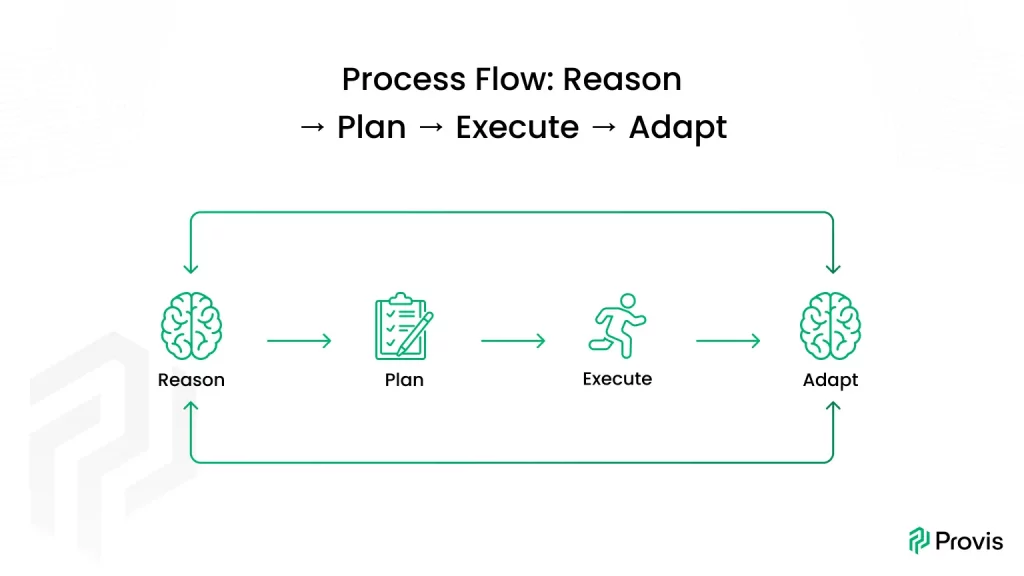
AI agents and agentic assistants are also able to:
- Integrate with multiple systems
- Perform complex, multi-step actions
- Automate workflows faster than most traditional automation tools
Best Practices for Maximizing Agentic AI Benefits
Define Clear Goals
To optimize the effectiveness of Agentic AI, organizations should consider how they deploy Agentic AI with regard to their business priorities.
By setting objectives related to their AI-related efforts, they can prioritize Agentic AI on specific high-value tasks.
Task planning AI when used strategically, will allow teams to confront obstacles, track progress and assess if the AI is benefitting some positive outcomes.
In summary, an overall objective-based approach will ensure Agentic AI is related to achieving the organization’s objectives.
Start Small and Scale
When implementing Agentic AI, start with workflows where the impact of the results will be most useful to test effectiveness.
Taking a scalable AI deployment framework supports increased scale while maintaining the organization, process and impact.
Inconsistent incremental AI implementation will enable organizations to learn, re-iterate and optimize processes, while a pilot AI strategy will help confirm results before full-scale implementation.
Embed Feedback Loops
To ensure continual improvement of Agentic AI, businesses should integrate a learning cycle that is iteratively improved based on past outcomes.
With an adaptive learning loop, the system can optimize workflows dynamically, and monitoring AI performance ensures task execution is efficient, accurate, and optimal.
Integrate Across Systems
To achieve the highest level of efficiency, Agentic AI should strive for seamless integration of AI systems across the board.
The utilization of cross-platform automation allows the AI to operate with cloud services, SaaS based tools, and internal applications as well.
Once workflow AI is integrated correctly, the tasks, data, and processes being utilized within the automation and connected to your company’s apps must be harmonized for maximum productivity and operational consistency.
Ensure Data Quality
To ensure Agentic AI works to its maximum potential, you need to ensure AI data accuracy. Consider an AI approach based on a clean dataset, which implies the AI is learning from known, reliable inputs.
Additionally, keeping the reliability of AI outcomes ensures insight and actionability for future tasks.
Promote Team Awareness
In order to maximize the potential of Agentic AI, organizations must invest in effective AI adoption training that allows teams to work effectively with AI systems.
An AI culture fosters responsibility and accountability as the norm, while team AI mindfulness allows for seamless incorporation of AI into the workflow.
Furthermore, cost awareness within the AI culture will allow organizations to maximize how costs are used while improving output and efficiency.
Real-World Applications of Agentic AI
- AutoGPT: Generates reports automatically, schedules tasks, and optimizes workflows, all demonstrating real-world applications of AI.
- ChatGPT with agents: Proactive recommendations plus resolve customer inquiries entirely autonomously demonstrate AI productivity results.
- Small businesses: Using Agentic AI for task tracking, reporting, and customer support reduces costs and increases operational efficiency, making Agentic AI a good example of an AI case study and AI success story.
Future Outlook for Agentic AI
Agentic AI is developing into autonomous digital co-workers across departments that will help streamline workflows and improve productivity. More organizations are incorporating next-gen AI systems into their daily routines to complete mundane tasks, allowing teams to devote time to strategic work.
Multi-agent AI systems will take the lead on complex workflows, while predictive AI workflows can provide analytics to help make better decisions, signaling major trends for the future of AI.
Workflows driven by cloud-integrated AI allow companies to implement scalable and automated processes. The independent evolution of AI is inducing a workplace transition toward AI, advancing workforce productivity and improving decision making, while continuing to reshape human-influenced AI collaboration.
FAQ’s-
Q1. What is the concept of agentic AI?
Agentic AI can reason, plan, and adapt on its own, while Traditional AI only follows pre-defined rules.
Q2. What are real-life examples of Agentic AI?
Tools like AutoGPT and ChatGPT with agents show how Agentic AI can plan, execute, and improve workflows independently.
Q3. Do small businesses benefit from Agentic AI?
Absolutely. Small businesses can use it for task scheduling, report automation, and customer support, helping them grow without huge costs.
Q4. What industries can benefit most from Agentic AI?
Industries like healthcare, finance, marketing, and IT can leverage Agentic AI for automation, predictions, and personalized user experiences.
Q5. Will Agentic AI reduce jobs?
Instead of replacing jobs, Agentic AI shifts focus. It takes over repetitive work, allowing people to engage in creative, strategic, and innovative tasks.
Q6. How secure is data handled by Agentic AI?
Secure implementation, monitoring, and regular updates ensure compliance with data privacy standards.
Q7. What are the best practices for implementing Agentic AI in organizations?
Define goals, start small, embed feedback loops, integrate across systems, ensure data quality, and train teams.
Q8. How does Agentic AI automate routine workflows?
Through machine learning, intelligent process automation (IPA), and adaptive task execution.
Q9. What are the common challenges in adopting Agentic AI?
Data quality issues, integration with legacy systems, and team adaptation are primary hurdles.
Q10. How does the feedback loop and adaptive learning work in Agentic AI?
AI continuously analyses past outcomes, learns from them, and refines future task execution.
Written By
Author's Picks
- Artificial Intelligence in Logistics: The Future is Here!
- 13/03/2025
- Al Agent for Online Shopping to Sell More 24/7
- 07/11/2025
- Rational Agent In AI: Intelligent Agents in Artificial Intelligence
- 13/01/2025
Categories
- AI for Startups
- AI in Web Development
- AI Integration
- AI Platforms
- AI Prompt
- AI Tools
- AI Trading Software
- Android App
- Android vs iOS Development
- Angular
- API
- API Development
- App
- app development
- App Idea
- App User Feedback
- Application
- Artificial Intelligence
- Audit Services
- Automotive Industry
- Awards and Recognition
- Business Consulting
- Business Website
- Chatbots
- CRM
- CRM for Financial Advisors
- Custom CRM
- Custom SaaS
- Custom Website
- Customer Service
- dashboard design
- Developing a Mobile App
- Digital Business
- E-commerce
- EMR Integration
- Finance
- Financial Advisors
- Financial Advisors
- GIT
- Health Insurance
- iOS App
- iOS App Development
- IoT Mobile App Development
- IoT Platforms
- IT Audit Services
- IT Consulting
- IT Strategies
- Java Development
- Laravel
- Lean Canvas
- Learning Management System
- Logistics Apps
- Mobile App Development
- MVP
- Native App
- News Aggregator Site
- OTT
- Outsourcing IT
- Payment Gateway
- predictive analysis
- Product Launch Strategy
- Progressive Web App (PWA)
- Prototype
- Recommender Systems
- Ruby
- SaaS
- SaaS Application
- SaaS Business
- SaaS Company
- SaaS Development
- SaaS Product
- SaaS Project
- Sales Funnel
- SEO
- Shopping Cart
- Software Development
- SSL and TLS
- Startup Checklist
- Technology
- Tetradic Color Scheme
- UI/UX Design Company
- Unit Testing
- User Flow
- User Testing
- Web Development
- Web Performance Optimization
- website Maintenance Services
- Website Migration Service
- Website Speed Optimization
- WooCommerce
- WordPress


